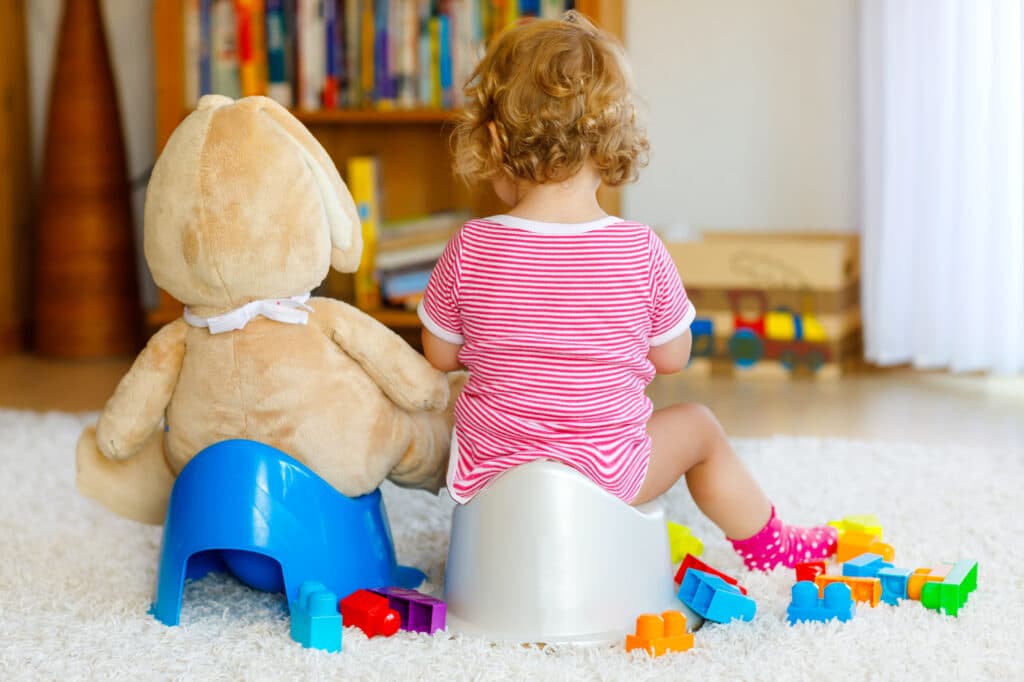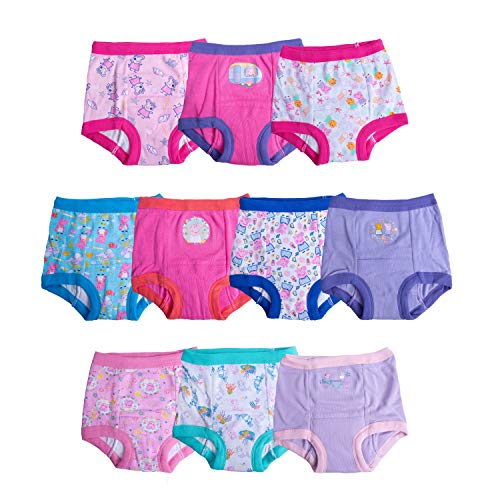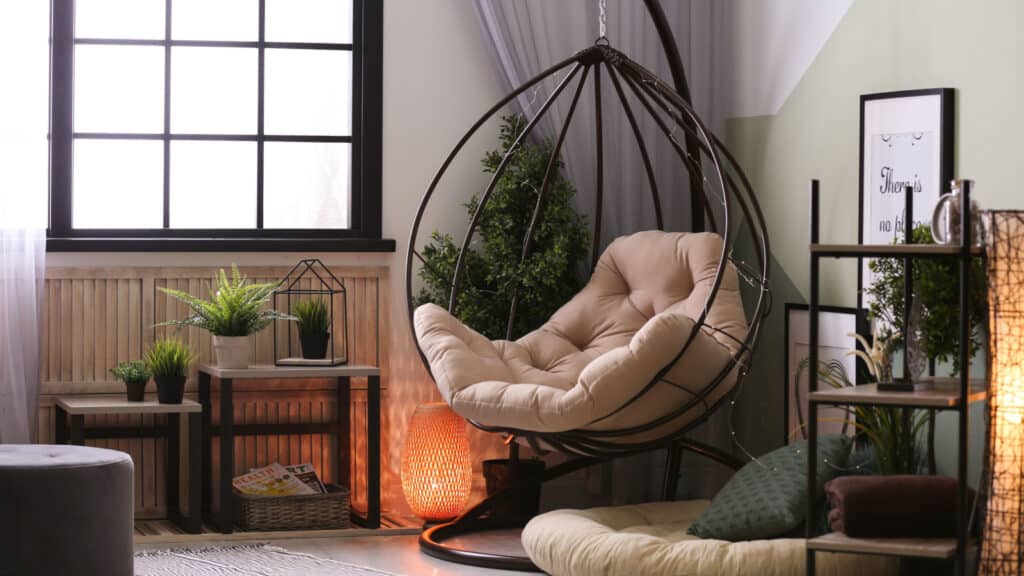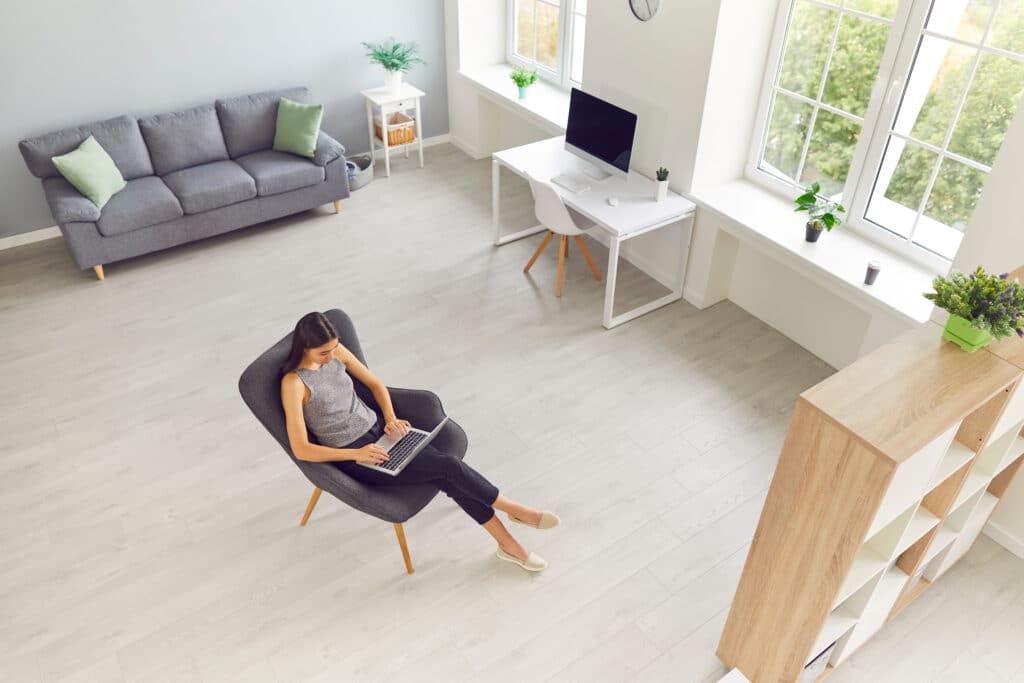When starting the potty training journey, patience is critical. Many parents find that the most effective strategy is to wait until their child demonstrates readiness and shows cues that they’re interested and not bow to pressure from friends or family because your child is a certain age.
Learn about when to teach children to use the toilet and what to expect.
DISCLOSURE: SOME OF THE LINKS IN THIS POST ARE AFFILIATE LINKS. THIS MEANS IF YOU CLICK ON AN AFFILIATE LINK AND PURCHASE THE ITEM, I WILL RECEIVE AN AFFILIATE COMMISSION AT NO EXTRA COST TO YOU. ALL OPINIONS ARE MY OWN AND I ONLY RECOMMEND PRODUCTS OR SERVICES I BELIEVE WILL ADD VALUE TO MY READERS. SEE FULL DISCLAIMER HERE.
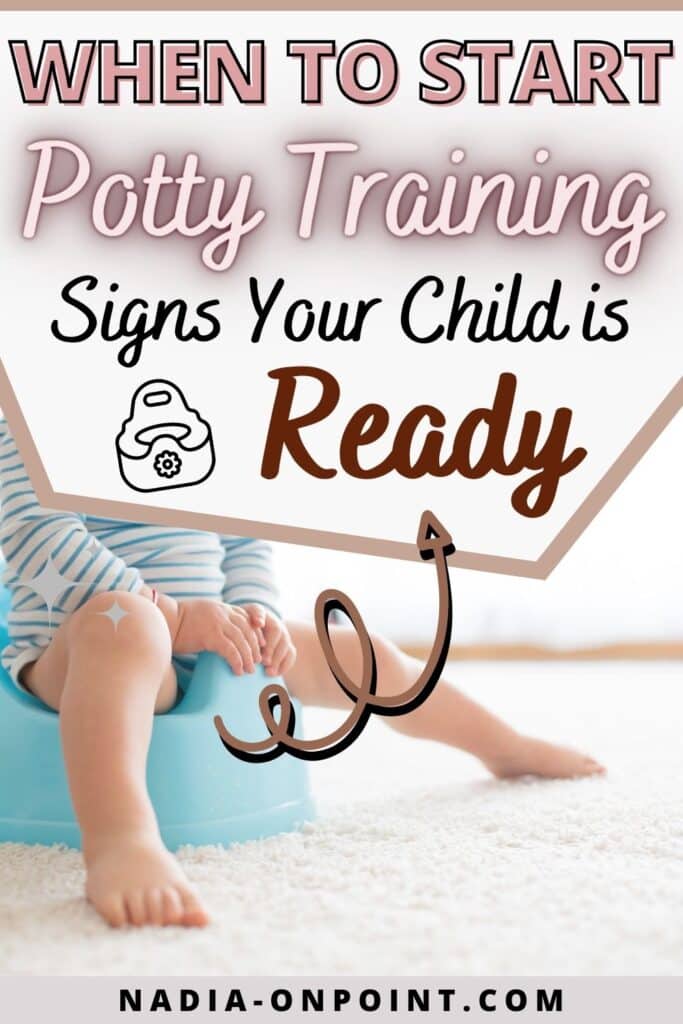
Signs A Child Is Ready To Potty Train
Potty training shouldn’t have strict time limits. It takes a complex skill set for the brain to develop. You know your children best. Learning to use the potty may be more straightforward and rapid after your kid starts to communicate using words.
Behavioral Signs Your Child Is Ready For Potty Training
Usually, by 15 months old, children tend to have a regular poop and pee schedule. The child’s elimination timing should be predictable. You can help them associate their routines with the need to use the toilet.
Have the child sit on the toilet to experience what it feels like to pee or poop on the potty. Talk your child through how their belly feels or what they did earlier (ate!).
Verbal Cues
Your child may be capable of saying they’re ready to start potty training. He might say, “I peed” or “I pooped” after soiling his diaper. This communication is an excellent sign that it may be time to start potty training.
Once they have used these phrases, ask them to tell you when they need to pee or poop. This heads-up gives you a window to rush to the bathroom for them to use the toilet.
They Respond Well To Positive Reinforcement
Occasionally children are delighted when bowel movements occur (“I am pooping!”). A common potty training technique is to give rewards like saying they are becoming a big girl or a big boy. For our children, we sometimes offer rewards. Our oldest liked stickers. Our twins preferred chocolate chips and jelly beans.
But don’t use punishment if they go potty or poop in their underpants. It may make the child afraid to make a mistake. Let them know they tried, and they will get it next time. Fear of punishment can even lead to constipation.
Clean any soiled underpants just like you would clean cloth diapers. You cleaning poopy underwear is gross but shouldn’t feel like a big deal to your child.
How Long Does Potty Training Take?
Despite programs promising potty training in three days, it can take longer than expected. Generally, it takes about 3-5 months. Another critical point to consider is when your child starts potty training. Younger children take longer to be fully potty trained. The average potty train time is 13 to 14 weeks when starting potty training, around two and a half to 3 years old.
Infant Potty Training: 0-12 Months
The potty training age in some countries starts in early infancy or even at birth. This approach to potty training requires parents to be very in tune with their infants and the cues they exhibit before they pee or poop. Once a parent has learned these signals and cues, they can get their baby to the bathroom in time for them to relieve themselves. This style is called elimination communication.
Elimination Communication is not for everyone, but those with the time and patience from birth don’t ever have to worry about diapers or potty training a toddler.
My sister-in-law did this with her three children. Her children were diaper free their entire lives. And her oldest stepdaughter practiced elimination communication with her son also.
Older Infants And Young Toddlers (12-18 Months)
It’s not impossible to toilet train a child as young as a year old. This age is the perfect time to introduce your toddler to the training process and potty time.
Start by letting your toddler watch you during this age. Explain to them what you are doing when you’re on the toilet. Then ask them if they want to try sitting on the toilet. You may wait to start by letting them practice with a diaper on, then sit on the toilet with no expectation of using it.
This approach is gentle to ease into potty training and makes it less scary. If your child happens to pee or poop during these practice sessions, make it a big deal, and let them know how proud you are of them.
Potty Training Between 18-24 Months
Children that do not like the potty chair at first may become more comfortable after they turn 18 months. They’ve had a chance to see you use the restroom more and they are becoming more in tune with their body. Plus they start to get annoyed with wet diapers.
Potty Training After 24 Months:
Many parents today delay potty training until children are at least 24 months old. A child’s brain develops and begins to cue their body of the need to relieve themselves during this period. Waiting until this age can reduce frustrations from both parents and children.
Potty Training Pants
Parents have many options when it comes to potty training pants. Disposable training pants like Pull-Ups have a similar feel to diapers and can frequently slow the potty training process. Training underwear feels similar to typical underwear for children but has thicker material to absorb accidents and misses. You can even easily make cloth training pants.
You can also check out these training pants from Amazon.
What’s The Best Potty Training Age?
The best time to start potting training is not universal. No two children are alike. Each kid should be treated individually. When a toddler wants to go into the bathroom, he will go.
Children learn by watching others. Observing siblings or parents accelerates the potting training experience. Having an older sibling can also affect when your toddler starts to show interest in potty training. Funny story: one of our twin daughters tried to pee standing up after watching her older brother pee.
It might be a good idea to avoid starting potty training if there are stressful times in the home. This may include bringing a new sibling home, moving, or medical procedure.
What Is The Average Age For A Baby To Be Potty Trained?
The average age for toilet training ranges from 2-3 for most toddlers. Most Americans are fully daytime toilet trained by age 4.
Night Time
Potty training overnight is entirely different from daytime. It often takes longer for a child to be fully nighttime potty trained. At first, it may make sense to leave them in their diapers overnight.
Children sleep soundly, and their brains don’t signal to their bodies that they need to use the bathroom resulting in accidents and wet beds.
Each family should decide what will work best for them. For some, it may be going cold turkey with no diapers. This method may require parents to wake their child every couple of hours to use the bathroom. When using this method, frequently, the child doesn’t know they’re being woken up, so you can have big celebrations in the morning when the sheets are dry.
Another approach is to continue with diapers or pull-ups overnight until the child starts to have dry pull-ups in the morning. Once he can go 3-4 nights at a time without an accident, try going to bed with underwear.
Another helpful tip with nighttime potty training is to stop liquid intake 1-2 hours before bedtime, other than a small sip of water before bed. This tip helps increase the odds of no overnight accidents or misses.
Expect your child to wet the bed as they learn their bladder control. It isn’t that difficult to clean the mattress if you know the tricks.
Potty Training Seats
Potty seat- there are many options on the market. Find one that works for your family. We liked the 2-in-1 toilet sets. This is a traditional toilet seat for adults and big kids, with a smaller little seat built in that lowers and raises when your toddler needs to use the bathroom. Another popular option is a seat you can place over a traditional toilet seat opening that is just the right size for your toddler.
Some Potty Seat Options:
Travel potty seats are helpful to have on hand when you’re out and about. You can carry foldable seats in your diaper bag and place them over full-size public toilets, making it easier and less scary for your little one. It’s also a good idea to keep a potty chair in your car if you’re on a road trip. Little kid equals little bladder.
A potty chair in your car lets you pull over anywhere and let your child pee. When they say they need to go, they may be unable to make it to the next exit or rest stop. They mean they need to go now. *line the toilet seat with a grocery store plastic bag in case of poop. The lining makes for easier clean-up. **keep a container of disinfecting wipes or spray in your vehicle to clean the seat off before continuing.
Here are some Portable Potty Seats.
In Conclusion
Potty training is as big a deal for you as parents as it is for your child. For cloth diapering families, there is a considerable reduction in the laundry. Completing potty training is a significant saving for families who use disposable diapers. Please pay attention to your child. They will let you know when they’re ready to begin training.
There will be accidents and misses from time to time, but you should be proud of your child and yourself once you’ve successfully transitioned to underwear.
This post originally appeared on Hello Sensible.
More Ideas from this Category

